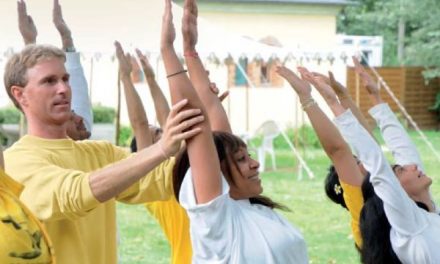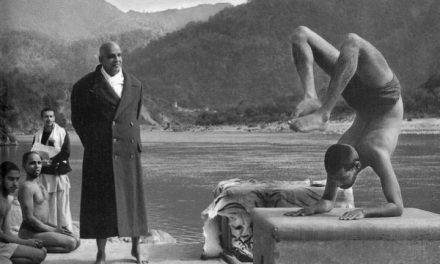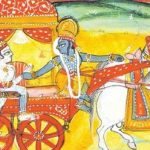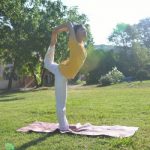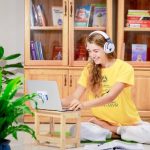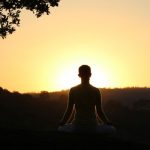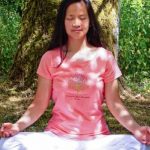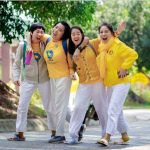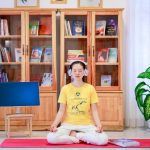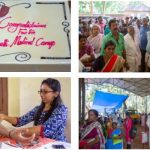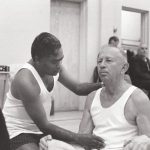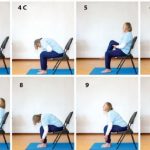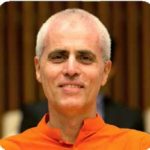 Your Living Spine
Your Living Spine
Experience the universality of your spine at the core of your asana practice
By Swami Sivadasananda
Generally, we feel our back when there is a tense or a pulled muscle. Asanas not only help to relieve such a painful state, they gradually make you feel the harmonious working of the various back muscles.
Leg Stretches
Many tensions in the lower back can be relieved by the practice of three kinds of leg stretches:
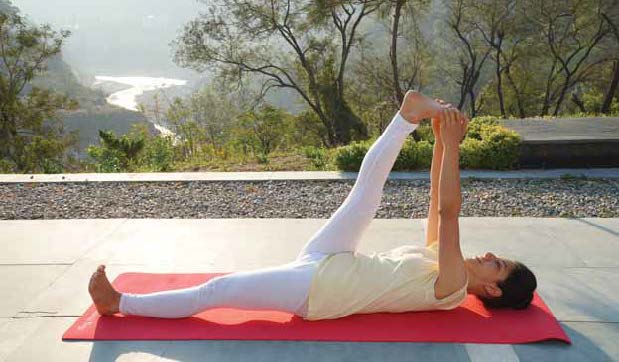
Posterior leg stretch

Stretching the adductor muscles of the leg

Stretching the abductor muscles of the leg
When you lie in savasana (corpse pose) after each stretch you can feel relaxation not only
in the leg muscles which you just stretched, but actually throughout the pelvis into the
lower back muscles.
Arms, shoulder girdle and upper back
Shoulderstand, plough, fish and bow: these asanas mobilise the shoulder girdle which helps to relieve tension in the upper back and neck.

Shoulderstand
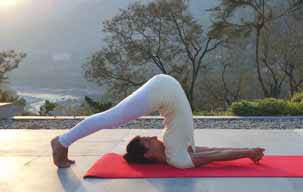
Plough

Fish

Bow
Feeling your vertebrae

1. Try to keep your legs quite high when rolling down from the shoulderstand.
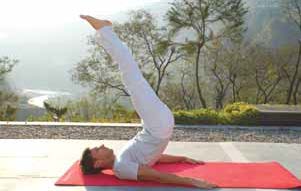
2. This strengthens the hands and arms and puts a good amount of pressure on the vertebrae as they touch the mat one by one.
![]()


3. Contract your abdominal muscles when you lower the legs, this will help you to keep your head and shoulder blades on the mat.
Balanced compression of the spine
Extensions or back bends bring the vertebrae closer to each other, creating pressure on the surrounding tissues. This can be very beneficial as it stimulates local blood circulation in the intervertebral discs and in the spinal ganglia. Spinal ganglia are clusters of nerve cell bodies in the spinal nerves next to the spine. These spinal ganglia are arranged in a chain on each side of the spine. Try to extend the compression to as many vertebrae as possible.
Avoid putting all the pressure on just one or two vertebrae. This type of exaggerated pressure easily occurs in those areas which are naturally curved backwards: the lower back and the neck.
Passive back bends
Passive back bends involve little effort; try to control the place and the degree of pressure on the vertebrae.
Camel
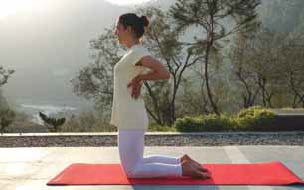
1. Support the upper back with your hands and try to bring the elbows and shoulder blades close together.

1a. Do not start the pose by strongly bending the lumbar area.

2. Then bend the neck and open the chest, without bending in the lower back.
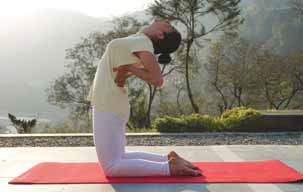
3. Finally control the posture with the abdominal muscles and the leg muscles.

3a. Do not exaggerate the curve in the lower back.
![]()
Active back bends
Active back bends strengthen the back muscles and allow an even distribution of the compression of the vertebrae.
Cobra

1. The half cobra strengthens the neck and upper back muscles; there is no risk of exaggerated compression of the lower back.

2. The basic cobra further strengthens the muscles of the neck and the upper back; there should be only slight pressure on the hands.

The full cobra increases the compression along all the vertebrae; by keeping the elbows close to the lower back, the shoulder blades can be kept close together; this avoids an exaggerated pressure in the lumbar area.
Child’s pose, a gentle counter stretch

First move backwards like a cat, stretching the arms, shoulders and the back. Then release the forehead to the floor and place the arms and hands next to the body.
Rotation along the axis

From the kneeling pose, rotate the whole spine to one side; feel the rotation along your vertebrae: there is very little twist in the lumbar spine, considerable twisting in the thoracic curve and even more in the cervical spine. When the chest is just slightly collapsed it not only greatly reduces the rotation in the upper back and neck, it also creates an exaggerated compression in the neck.
From the extremities to the spine
The half spinal twist makes intense use of the extremities to allow optimal rotation
along the whole spine.
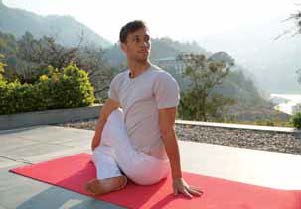
Choose and adapt your spinal twist wisely. A main consideration is to make sure that the spine is well aligned.

!!! Even slight forward collapsing of the chest or moving your chin upwards will greatly reduce the amount of twisting in the upper back and the neck.
Triangle
Like the twist, side-bending asanas are asymmetrical, i.e. the posture has a different effect on the left and the right side of the back. Asymmetrical variations are especially beneficial to balance and relax the back muscles.

The triangle combines muscle strengthening and contraction in a unique way. When you enter the triangle the first sensation is the lateral stretch. A few breaths later you may start to feel a particular muscle resistance or contraction within this lateral stretch. This ensures that the torso remains parallel to the floor. It is called “eccentric contraction.”
Feeling your spine in the asanas
Most asanas focus on specific back muscles and specific movements of the vertebrae. Hands and arms, feet and legs are the indispensable servants.
Imagine any spinal position without using the extremities – impossible. When an asana is practiced for the first time, the main attention is on the extremities. Only later the control of the back muscles is developed. When the attitude in the class or even in your own practice is competitive, one may actually hardly feel the spine itself, as the concentration is directed completely on the extremities and on the back muscles.
If the approach in the asana is to balance posture, breathing and relaxation, it is easier to hold the posture for a longer time, the proprioception or body awareness is deepened, and it may be possible to actually focus on the position of each vertebra. As long as the attention in the asana is placed mostly on strength and flexibility of the extremities and the particular movements of the torso, the body identification remains very personal.
Whether tall or small, thin or obese, young or old, male or female, – it is quite possible that these qualifications or pairs of opposites continue to dominate your physical experience and the mental picture that you have of yourself. Try to bring the focus in the asanas to the spine and the skull. Think of your body as being essentially the spine and the skull. Your body experience will change.
Tall or small, thin or obese, young or old, male or female – these qualifications do not relate much to the spine and the skull. Transcending body identification is a central theme in all yoga paths. It connects the yogi to a wider consciousness beyond the physical body. An important aspect of Hatha Yoga is to experience the universality of your spine at the core of your asana practice.
Swami Sivadasananda Yoga Acharya and a senior student of Swami Vishnudevananda, teaches workshops throughout the Sivananda Centres in Europe and Teachers’ Training Courses worldwide. email: [email protected]

